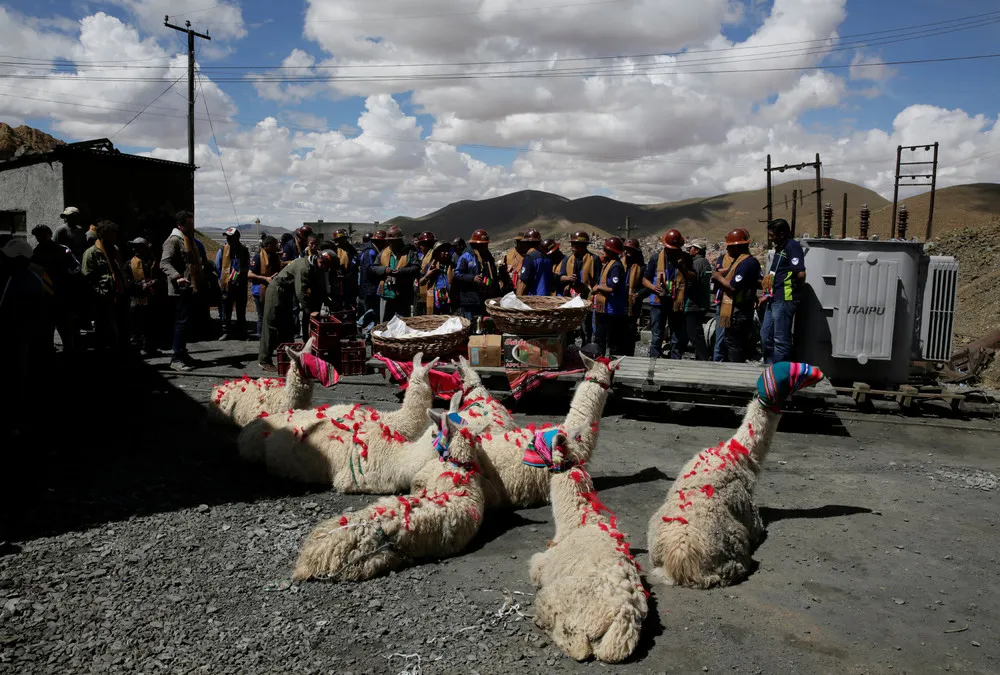|
Llamas sit as independent miners bless the mine by offering animal sacrifice as part of Andean carnival celebrations, outside the Mina Itos on the outskirts of Oruro, Bolivia, February 24, 2017. In the mines of highland Bolivia, “El Tío” is the familiar name for the spirit owner of the mountain, who is also known as Huari or Supay. He is closely related to similar figures found in mines in Peru called “muqui”. The words “El Tío” are Spanish for “the uncle” and evince the relationship of patronage that the miners have with the spirit. He is associated with pre-Hispanic huacas as well as the Christian Devil and is a central figure in the ritual life of Bolivian mining communities. An icon of the Tío is situated in each mineshaft to receive sacrificial offerings of alcohol, coca, cigarettes, llama blood and other ritual items from the miners in return for his goodwill and his guarantee of good health and good fortune in the mines. These rites of sacrifice to the spirit owner of the mines reflect both the pre-Columbian system of reciprocity and the relations of patronage that have come down from Spanish colonial society. In the pre-Columbian Andean world view, the huacas (deities) that were embodied in natural landmarks were an important part of the social landscape (Photo by David Mercado/Reuters)
|

